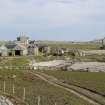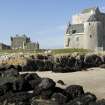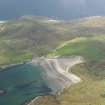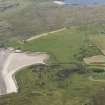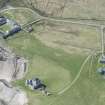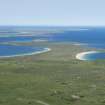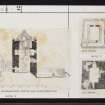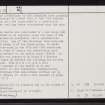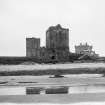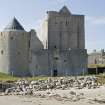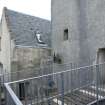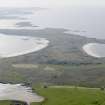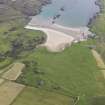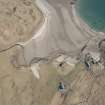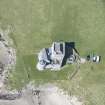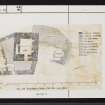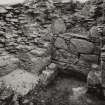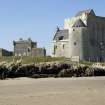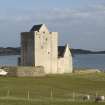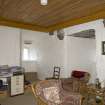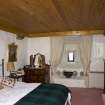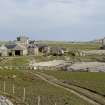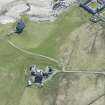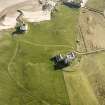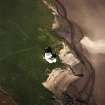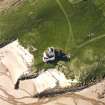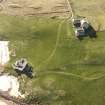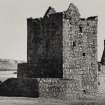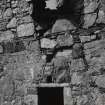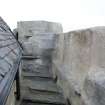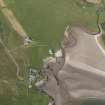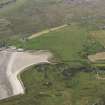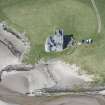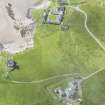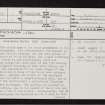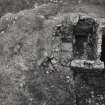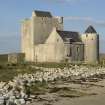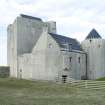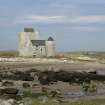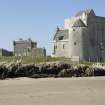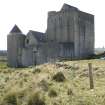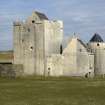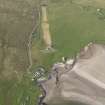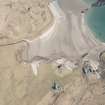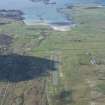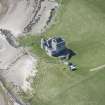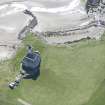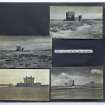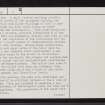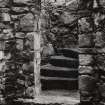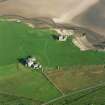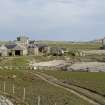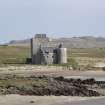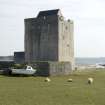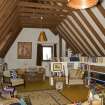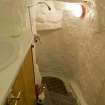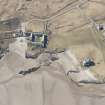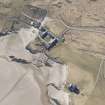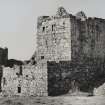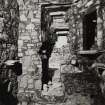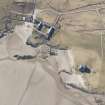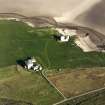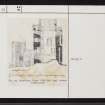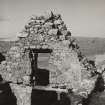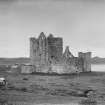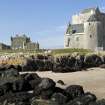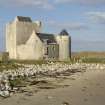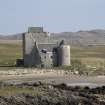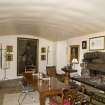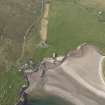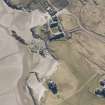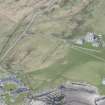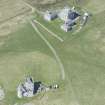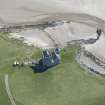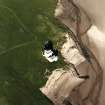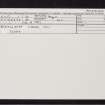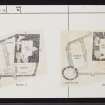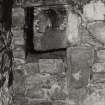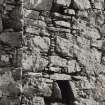Coll, Breachacha Castle
Castle (Medieval)
Site Name Coll, Breachacha Castle
Classification Castle (Medieval)
Alternative Name(s) Breacacha Castle
Canmore ID 21576
Site Number NM15SE 1
NGR NM 15990 53910
Datum OSGB36 - NGR
Permalink http://canmore.org.uk/site/21576
- Council Argyll And Bute
- Parish Coll
- Former Region Strathclyde
- Former District Argyll And Bute
- Former County Argyll
Rebuilt C15th castle, originally built by the MacLeans of Coll. The castle has had a number of periods of rebuilding, but was mostly unoccupied post the building of Breachacha House (new castle). The latest period of rebuilding began in the 1960's where the castle was rebuilt preserving as much of the original as possible and using the building to help hide some more modern services, the restoration occasionally used the labour of the then fledgeling Project Trust volunteers. The rebuilding was completed in the 1990's.
RCAHMS (CAJS) 2012.
NM15SE 1 15990 53910.
(NM 1599 5390) Breachacha Castle (NR) (restored)
os 1:10,000 map, (1976)
Breachacha Castle stands upon a low rocky promontory at the head of Loch Breachacha. Its architectural development is complex, and some details obscure, but the main phases of construction appear to be as follows: The oldest surviving portion of the castle is the tower-house, which was probably erected during the first half of the 15th century. This was a rectangular building of four main storeys and a garret. After the completion of the lower stages of the tower-house, the S and E sides of the tower were enclosed by a curtain-wall. Against the S wall of the courtyard thus formed there was built a single-storeyed hall, and at the SE angle of the curtain-wall a cylindrical flanking-tower two storeys in height. The curtain was pierced by two entrance-doorways, one in the centre of the E wall and the other at the W end of the S wall. Subsequently, the SW corner of the courtyard was enclosed on its N side to form an entrance-lobby. A small lean-to building probably occupied the NW corner of the courtyard abutting the tower-house, while ancilliary buildings of turf or dry- stone construction may have stood within an outer enclosure beyond the curtain-wall. This outer enclosure also contained a kitchen, situated immediately N of the tower-house. This was presumably erected some time in the period between the completion of the tower-house and the commencement of a major scheme of reconstruction towards the end of the 16th century. During these alterations, the third floor and upper works of the tower were remodelled, and a new turnpike stair constructed; a new entrance was also made, in the E wall at first-floor level. Within the courtyard, the parapet and parapet-walk were raised in height and box machicolations constructed above the two entrance-doorways. The entire open area of the courtyard was filled with sand and boulders, thus forming platforms along the S and E sides of the tower- house between ground- and first-floor levels.
In the early 17th century, the main work undertaken was the construction of an artillery defence on the N side of the tower-house. This was intended to comprise a low forework, or battery, of multiangular plan, but only the W portion was completed. The upperworks of the tower were further remodelled.
The last major alterations to the structure were probably carried out during the second half of the 17th century when the early hall was superseded by a substantial three-storeyed dwelling house constructed upon the same site.
About 1750 the castle was superseded by a new house (NM15SE 16) erected on an adjacent site, but some of the buildings remained in occupation for a considerable period thereafter. One of the buildings thus occupied was the old kitchen, N of the tower-house, to which alterations were made in the 18th and 19th centuries. Certain minor items of repair and restoration were carried out elsewhere in the castle about 1930-8. In 1965 the castle was purchased by Major N V MacLean Bristol, who began to restore the building for private residential use. (The RCAHMS give a full architectural account of the castle as it was immediately prior to this operation, incorporating information obtained from excavations carried out by D J Turner in 1965-8, of which a full account is given by D J Turner and J G Dunbar 1973.)
RCAHMS 1980; D J Turner and J G Dunbar 1973.
Breacachadh Castle (Major N V MacLean, Bristol) is occupied and in the course of complete restoration.
Revised at 1:10,000.
Visited by OS (I S S) 10 June 1972,
Photographic Survey (1967)
Photographic survey of Breachacha Castle, Coll, Argyll, by RCAHMS in 1967.
Photographic Survey (22 April 2008)
Photographed by the Listed Buildings Area Survey, Argyll, upgrade programme.
RCAHMS (CAJS) 2012.





















































































